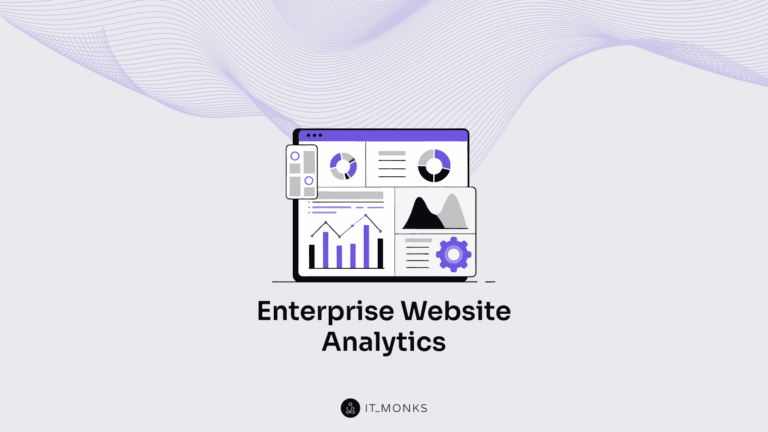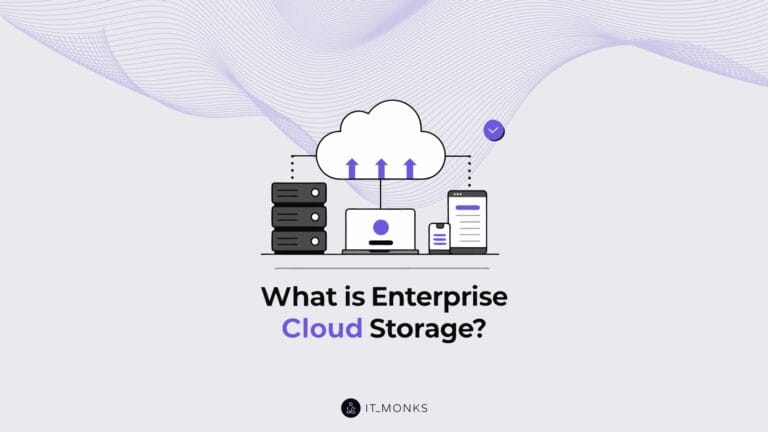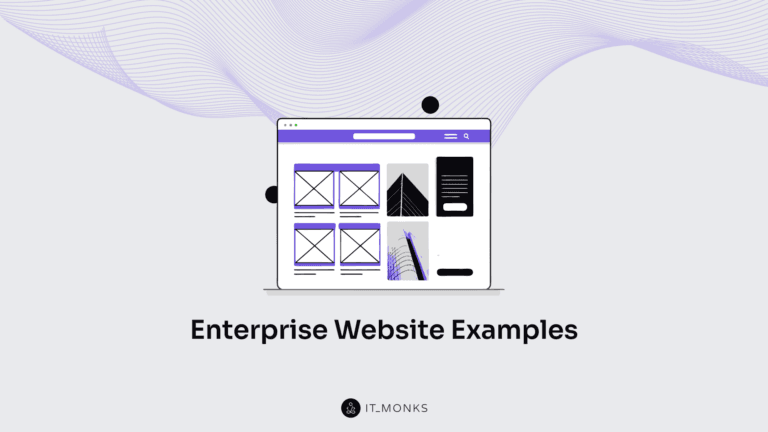How to Increase Traffic to Your Ecommerce Website
Table of Contents

Driving traffic to your ecommerce website is crucial for the success of your business. Without visitors, even the most well-designed site with the best products will struggle to generate sales. Online traffic brings potential customers, increases brand visibility, and provides opportunities for engagement and conversion. How to drive traffic to your ecommerce store? This guide will teach you how to increase ecommerce traffic to your website through various strategies, including search engine optimization (SEO), content marketing, social media marketing, email marketing, and paid advertising. Let’s discuss each of these strategies in detail.
Ecommerce Search Engine Optimization (SEO)
SEO is the process of improving the quality and quantity of traffic to your website from search engines. It involves optimizing your site to improve its visibility on search engine results pages (SERPs), making it easier for potential customers to find your products and services. By following proven SEO steps for WordPress, you can achieve higher rankings, increased traffic, and more conversions, setting the foundation for sustainable online success.
Targeting the Right Keywords
Keyword research is essential for any successful SEO strategy. It involves identifying the search terms that potential customers use when looking for products or services like yours. There are two main types of keywords to consider: informational and commercial.
- Informational Keywords: These are used by users seeking information or answers to questions, such as “How to choose the best running shoes” or “Benefits of organic skincare.”
- Commercial Keywords indicate a buying intent, such as “buy running shoes online” or “organic skincare products for sale.”
You can use e-commerce tools like Google Keyword Planner, Ahrefs, SEMrush, and Moz to find the right keywords. Analyzing competitor keywords, using keyword suggestion tools, and leveraging long-tail keywords can also help you target your audience more effectively.
On-Page SEO
On-page SEO involves optimizing individual web pages to rank higher and earn more relevant traffic. Here are some best practices for using on-page SEO to improve traffic to your ecommerce site:
- Page Titles: Craft unique and descriptive titles for each page that include your primary keywords. This helps search engines understand the page and improves click-through rates.
- Meta Descriptions: Write compelling meta descriptions that summarize the page content and include relevant keywords. This snippet appears under your page title in search results and can significantly influence click-through rates.
- Headers (H1, H2, H3, etc.): Use headers to structure your content, making it easier for search engines and users to understand. Incorporate keywords naturally within these headers.
- Content: Ensure your content is high-quality, informative, and relevant to your audience. Use keywords naturally and avoid keyword stuffing. Aim to provide value to your users with every piece of content.
Technical SEO
Technical SEO focuses on the backend aspects of your website to ensure that search engines can crawl and index your site efficiently. Key elements include:
- Site Architecture: Create a clear and logical structure for your site. This makes it easy for search engines and users to navigate.
- Internal Linking: Use internal links to connect related content on your site. This helps distribute page authority and improve user experience.
- Mobile Optimization: Ensure your site is mobile-friendly. Many users access websites via mobile devices, and a responsive design improves usability and can positively impact your rankings.
Site Speed: Optimize your website’s loading speed to reduce bounce rates and improve user experience. Both users and search engines favor faster sites.
Seeking expert ecommerce SEO help?
Content Creation
High-quality content is crucial for attracting and retaining visitors. Creating content that outperforms competitors helps establish your site as an authority, encourages repeat visits, and increases ecommerce traffic. Focus on:
- Value: Produce content that provides real value to your audience by answering their questions and solving their problems.
- Uniqueness: Ensure your content is original and offers a unique perspective or information not readily available elsewhere.
- Engagement: Use engaging formats like infographics, videos, and interactive elements to keep users interested and returning for more.
Link Building
High-quality backlinks from reputable sites can significantly boost your authority and increase ecommerce traffic. Strategies include:
- Guest Posting: Write articles for other websites in your niche and include links to your site. This not only drives traffic but also enhances your site’s authority.
- Influencer Outreach: Build relationships with influencers who can share your content with their audience, providing you with valuable backlinks and increased visibility.
- Content Promotion: Share your content on social media, forums, and other platforms to increase its visibility and likelihood of being linked to other sites.
Ecommerce Content Marketing

Content marketing is a powerful strategy for ecommerce businesses to attract, engage, and convert customers. Creating quality content is one of the proven ways to improve traffic to your ecommerce site.
Creating and distributing valuable and relevant content can build trust with your audience, establish your brand as an authority in your industry, and drive traffic to your site. This approach helps attract new customers and retain existing ones by providing continuous value.
Blogging
Blogging is one of the most effective content marketing strategies for ecommerce businesses. It allows you to create helpful and relevant content that addresses the needs and interests of your target audience. Here’s how to make the most of blogging:
- Creating Helpful and Relevant Blog Posts: Write posts that answer common questions, solve problems, and offer valuable insights about your products and industry. This will help attract visitors to your site and establish your brand as an authority in your niche.
- Frequency and Consistency in Publishing: Consistency is key to maintaining and growing your audience. Create a content calendar to ensure you publish new posts regularly. Whether weekly, bi-weekly, or monthly, sticking to a schedule helps keep your audience engaged and returning for more content.
Want to add a blog to your store?
Guest Posting
Guest posting involves writing articles for other websites that target your ideal customers. This strategy can expand your reach and drive traffic back to your ecommerce site. Here’s how to effectively use guest posting:
- Target the Right Websites: Identify websites and blogs that cater to your target audience. Look for sites with high engagement and authority in your industry.
- Provide High-Quality Content: When writing guest posts, ensure the content is high-quality, informative, and relevant to the host site’s audience. This increases the likelihood of acceptance and encourages readers to visit your site for more valuable content.
Video Content
Video content is an increasingly popular and effective way to engage and inform your audience. It allows you to showcase your products, share customer testimonials, and provide valuable information in an engaging format.
Videos are highly engaging and can capture your audience’s attention more effectively than text or images alone. They are beneficial for demonstrating products, providing tutorials, and sharing behind-the-scenes content.
To reach a broader audience, utilize popular video platforms such as Instagram, YouTube, and TikTok. These highly visual platforms have large user bases, making them ideal for promoting your video content.
- Instagram: Use Instagram Stories, IGTV, and Reels to share short, engaging videos. Instagram is great for showcasing product features, sharing quick tips, and engaging with your audience more casually and personally.
- YouTube: Create a YouTube channel for your brand and upload longer, more detailed videos. YouTube is excellent for product reviews, how-to guides, and in-depth tutorials. It’s also a powerful search engine, helping new customers discover your brand.
- TikTok: Leverage TikTok’s short-form video format to create fun, creative, and viral content. TikTok’s algorithm can help your videos reach a wide audience, especially among younger demographics.
Social Media Marketing for Ecommerce

Social media marketing is an essential component of any successful ecommerce strategy. Social platforms directly engage with potential customers, increase brand awareness, and drive more traffic to your website. By effectively utilizing social media, ecommerce businesses can reach a broader audience, foster community, and convert followers into loyal customers.
Active Social Media Presence
Maintaining an active presence on social media is crucial for staying relevant and engaging with your audience. Regular activity on social media helps keep your brand top-of-mind for your audience. It allows you to build relationships, respond to customer inquiries, and stay ahead of trends. An active presence also signals to social platforms’ algorithms that your content is valuable, which can increase your visibility.
To engage effectively, create content that resonates with your audience. This includes:
- Interactive Posts: Use polls, quizzes, and questions to encourage interaction.
- User-Generated Content: Share content your customers create to build community and trust.
- Visual Content: Use high-quality images and videos to capture attention.
- Consistency: Post regularly to maintain engagement. Use a content calendar to plan and schedule your posts.
Choosing the Right Platforms
Only some social media platforms will be suitable for some businesses. Choosing the platforms that best align with your target audience and business goals is important.
Consider the following factors when selecting platforms:
- Audience Demographics: Identify where your target audience spends their time. For example, Instagram and TikTok are popular among younger users, while Facebook and LinkedIn cater to an older demographic.
- Content Type: Different platforms support different types of content. Platforms like Instagram and Pinterest are ideal if your business relies on visual appeal. For B2B companies, LinkedIn might be more appropriate.
- Business Goals: Align your platform choice with your marketing goals. Consider platforms with robust advertising options like Facebook and Instagram to drive more traffic and sales.
Download Now: 23 Viral LinkedIn Post Templates
Grab 23 templates to create engaging and impactful LinkedIn posts.
Whether you share insights, tell stories, or offer tips, these templates simplify crafting compelling posts that resonate with your audience.
Influencer Marketing
Influencer marketing leverages the reach and credibility of individuals with a large following to promote your products.
- Building Relationships with Influencers: Start by identifying influencers whose audience aligns with your target market. Reach them with a personalized message, proposing a mutually beneficial partnership. Build genuine relationships by engaging with their content and understanding their audience.
- Leveraging Influencer Reach to Drive Traffic: Collaborate with influencers to create authentic content that showcases your products. This could include sponsored posts, product reviews, or giveaways. Influencers can help amplify your message, driving traffic to your site and increasing sales. Ensure the collaboration feels natural and aligns with your brand values to maintain authenticity.
Email Marketing

Email marketing is a powerful tool for ecommerce businesses, offering a direct and personal way to communicate with customers. It allows you to build relationships, provide value, and drive sales by delivering targeted and relevant messages straight to your audience’s inbox. A well-executed email marketing strategy can enhance customer loyalty, increase conversions, and generate significant revenue.
Building an Email Database
Growing your email subscriber list is the first step to successful email marketing. Here are some effective techniques:
- Pop-Ups: Use pop-ups on your website to capture visitors’ email addresses. Offer incentives such as discounts, free shipping, or exclusive content to encourage sign-ups.
- Additional Discounts: Provide a special discount or promotional offer for new subscribers. This grows your list and motivates customers to make their first purchase.
- Lead Magnets: Offer valuable resources like eBooks, guides, or checklists in exchange for email addresses. This works particularly well if the content is highly relevant to your target audience.
- Social Media and Blogs: Promote your email sign-up on your social media channels and blog posts. Highlight the benefits of subscribing, such as receiving exclusive offers, updates, and valuable content.
Crafting Effective Email Campaigns
Creating compelling email content is crucial for engaging your audience and driving action. Here are some tips:
- Writing Compelling Content: Craft clear, concise, and engaging emails. Use attention-grabbing subject lines to increase open rates. Ensure the content is valuable and relevant to your audience, and include a strong call-to-action (CTA) that encourages the desired response.
- Segmentation and Personalization: Segment your email list based on customer behavior, preferences, and demographics. Personalize your emails by addressing subscribers by name and tailoring content to their interests. This increases engagement and conversion rates.
- Design and Mobile Optimization: Use visually appealing designs that align with your brand. Ensure your emails are mobile-friendly, as many users read them on mobile devices.
Seeking expert UI/UX services?
Automation and Retargeting
Email automation allows you to send timely and relevant messages to your subscribers without manual intervention. Here are some common scenarios for automation:
- Cart Abandonment: Send automated emails to remind customers of items left in their carts. Include a compelling CTA and an incentive like a discount to encourage purchase completion.
- Welcome Series: Send welcome emails to new subscribers, introducing them to your brand, products, and values. This helps build a strong foundation for future engagement.
- Post-Purchase Follow-Up: Send thank-you emails after a purchase, including product recommendations and review requests. This enhances customer satisfaction and encourages repeat purchases.
- New Discounts and Offers: Inform subscribers about new discounts, sales, and special offers. Use urgency and exclusivity to drive action.
- Special Occasions: Send personalized emails on special occasions like birthdays, anniversaries, or holidays. Offer special discounts or gifts to make the customer feel valued.
Platforms like Mailchimp, Klaviyo, and ActiveCampaign can help you implement and manage email automation effectively. These tools provide robust features for creating, sending, and analyzing automated email campaigns, ensuring your messages reach the right audience at the right time.
Paid Advertising

Paid advertising is a powerful way to drive immediate traffic to your ecommerce website. By investing in paid ad campaigns, you can reach a highly targeted audience, increase brand visibility, and achieve quicker results than organic methods. Paid advertising allows you to control who sees your ads when they see them, and how much you spend, making it a flexible and scalable option for growing your business.
Google Ads and Pay-Per-Click (PPC)
Google Ads, particularly Pay-Per-Click (PPC) advertising, is crucial for increasing visibility on search engines. PPC ads appear at the top of search results, giving you prime real estate for attracting potential customers who are actively searching for products like yours.
PPC allows you to target specific keywords related to your products, ensuring your ads reach people with high purchase intent. It provides immediate visibility and drives qualified traffic to your site.
Take the following steps to set up your first search campaign:
- Keyword Research: Use tools like Google Keyword Planner to identify relevant keywords with high search volume and manageable competition.
- Ad Copy: Write compelling ad copy with your target keywords, a clear value proposition, and a strong call-to-action (CTA).
- Landing Pages: Ensure your landing pages are optimized for conversions, with clear and relevant content that matches the ad copy.
- Budget and Bidding: Set a daily budget and choose a bidding strategy (manual or automated) that aligns with your campaign goals.
- Monitoring and Optimization: Regularly monitor your campaign performance, adjusting keywords, bids, and ad copy to improve results.
Social Media Ads
Advertising on social media platforms like Facebook, Instagram, and others can effectively reach a large and engaged audience. Facebook and Instagram offer detailed targeting options, allowing you to reach users based on demographics, interests, behaviors, and more. Utilize Facebook Ads Manager to create and manage campaigns.
Depending on your audience, consider advertising on platforms like Twitter, LinkedIn, Pinterest, and TikTok. Each platform offers unique targeting options and ad formats.
- Audience Segmentation: Create custom audiences based on your existing customer data, website visitors, and engagement. Use lookalike audiences to find new potential customers like your best existing ones.
- Ad Creatives: Design visually appealing and engaging ads. Use high-quality images or videos, clear messaging, and strong CTAs. A/B tests different creatives to see what resonates best with your audience.
- Ad Formats: To showcase your products effectively, utilize various ad formats, such as carousel ads, video ads, story ads, and collection ads.
Google Shopping
Google Shopping ads are essential for ecommerce businesses as they display your products directly in Google search results, complete with images, prices, and store information. These ads are highly effective for driving qualified traffic, as they provide users with a visual representation of your products and key details upfront, increasing the likelihood of clicks and conversions.
Take the following steps to set up Google Shopping Ads:
- Merchant Center Account: Create a Google account and upload your product feed. Ensure your product data is accurate and up-to-date.
- Link to Google Ads: Link your Merchant Center account to your Google Ads account to create Shopping campaigns.
- Campaign Setup: In Google Ads, create a new Shopping campaign. Set your budget and bidding strategy. Organize your products into ad groups based on categories, brands, or custom labels.
- Optimization: Monitor your campaign performance, adjust bids, and optimize your product feed for better visibility and results. Use negative keywords to exclude irrelevant searches.
Advanced Strategies

In addition to foundational tactics like SEO, content marketing, social media, and email marketing, advanced strategies can further increase ecommerce traffic. These strategies, such as retargeting ads, affiliate marketing, and public relations, can help you reach new audiences, re-engage previous visitors, and enhance your brand’s credibility and visibility.
Retargeting Ads
Retargeting ads are a highly effective way to bring back visitors who have previously interacted with your website but didn’t complete a purchase. Retargeting works by using cookies to track visitors to your site. When these visitors leave without making a purchase, they are shown your ads on other websites and social media platforms they visit. This keeps your brand top-of-mind and encourages them to return and complete their purchase. Retargeting is effective because it targets users who have already expressed interest in your products, making them more likely to convert.
Best practices for setting up retargeting campaigns:
- Segmentation: Segment your audience based on their behavior, such as pages visited, time spent on site, or products viewed. This allows for more personalized and relevant ads.
- Compelling Ads: Your retargeting ads should use engaging visuals and strong CTAs. They should highlight special offers, discounts, or reminders of the products they viewed.
- Frequency Capping: Limit the number of times your retargeting ads are shown to avoid annoying potential customers. Finding the right balance is key to maintaining positive brand perception.
- Exclusion Lists: To optimize your ad spend, exclude users who have already made a purchase or have repeatedly ignored your ads.
Affiliate Marketing
Affiliate marketing involves partnering with individuals or other businesses (affiliates) who promote your products in exchange for a commission on sales they generate. Affiliates use their platforms — blogs, social media, or websites — to promote their products to their audience. When someone purchases through their unique affiliate link, the affiliate earns a commission.
Consider the following quick tips for setting up your affiliate program:
- Choose a Platform: To manage your program, use affiliate marketing platforms like ShareASale, CJ Affiliate, or your in-house affiliate program software.
- Define Commission Structure: Decide on the commission rates and payment structure. Ensure it’s attractive enough to motivate affiliates.
- Recruiting and Managing Affiliates: Contact potential affiliates in your industry and provide them with marketing materials and support. Communicate regularly with your affiliates and offer incentives for top performers.
Public Relations (PR)
Public relations (PR) involves managing your brand’s reputation and building relationships with the media to gain coverage in various outlets. PR helps build credibility and trust in your brand by securing positive media coverage in newspapers, magazines, blogs, and other outlets. It enhances your brand’s visibility and can drive significant traffic to your website.
Some of the most common PR strategies include:
- Press Releases: Write and distribute press releases about new product launches, company milestones, or other newsworthy events to attract media attention.
- Media Outreach: Build relationships with journalists and influencers in your industry. Pitch story ideas and provide them with valuable information that aligns with their audience’s interests.
- Thought Leadership: Position yourself or key members of your team as industry experts by contributing articles, participating in interviews, and speaking at events.
- Event Sponsorships: Sponsor events, webinars, or podcasts related to your industry to increase your brand’s exposure and credibility.
Conclusion
To increase ecommerce traffic, you need to take a multifaceted approach. This involves attracting a steady stream of visitors by leveraging SEO, content marketing, social media, email marketing, and paid advertising. Advanced strategies like retargeting ads, affiliate marketing, and public relations can further amplify your efforts, helping you reach new audiences and re-engage past visitors.
Consistency and quality are key in all your marketing efforts. Whenever you need professional help building your web store and driving more online traffic, consider relying on the IT Monks team’s expert help. We know how to create stunning websites that are functional, user-friendly, competitive, and optimized for driving more traffic. Contact us today, and we’ll help you find a solution that boosts your project’s online presence.




